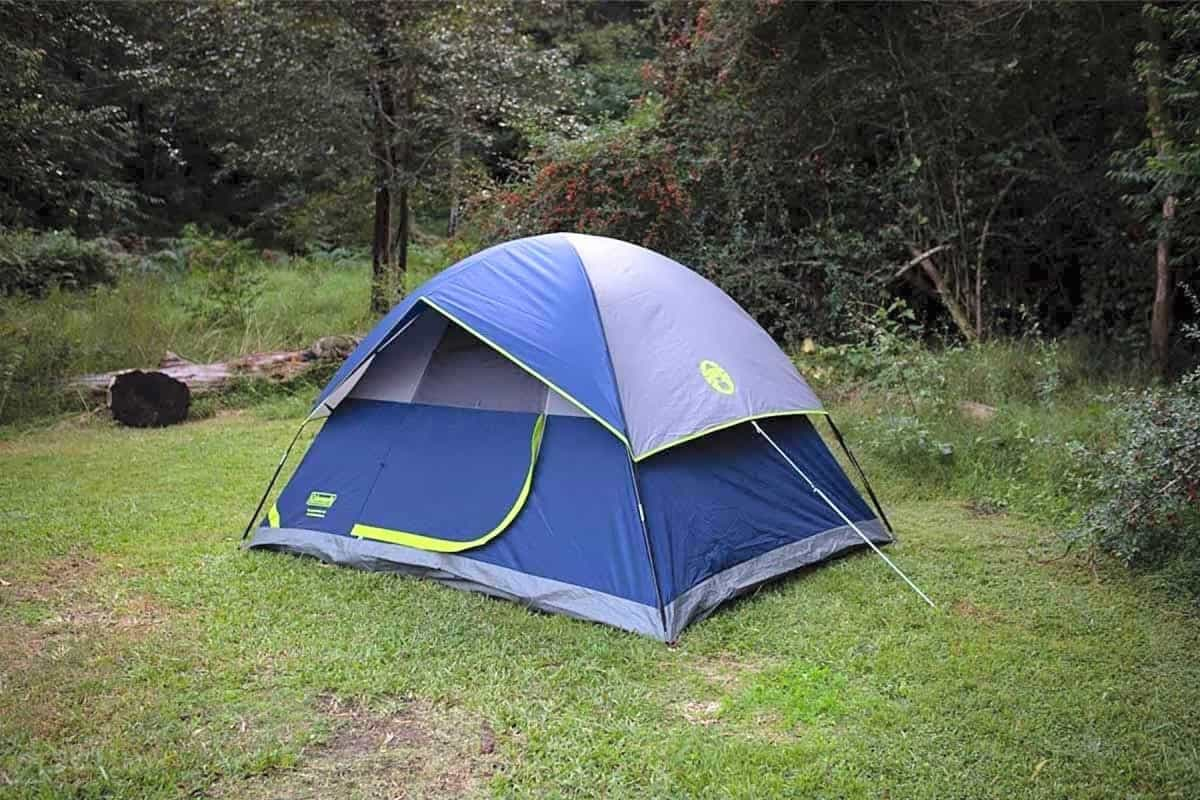Dome tents
Dome tents are popular, and with good reason. This versatile, inexpensive tent design is very popular at campsites and will be just right for many travellers – but before buying one it’s still worth exploring how dome tents work and looking at their pros and cons.

What is a dome tent?
Dome tents are square or rectangular tents that use flexible poles to create a self-contained structure that supports the fabric part of the tent (the poles themselves may be in or outside the rainfly). Viewed from above, the main poles will cross over each other in an X shape, creating a sturdy design that is suitable for most weather conditions.
Dome tents are similar in design and style to geodesic (or ‘geo’) tents, although these have more poles and crossovers for extra stability and strength. Because of these factors, geodesic tents are also typically more expensive than dome tents.
Dome tent pros and cons
Pros:
-
Dome tents are relatively simple to set up and can be easily assembled and disassembled by just one person. Although they’re not as quick to erect as, say, pop-up tents, most campers find their design simple and intuitive.
-
Dome tents are widely available, meaning they are on the cheaper end of the camping equipment spectrum. It is possible to buy a cheap dome tent for under £30 and a good one for £50 to £100.
-
Dome tents are reasonably lightweight as they do not have as many poles as, for example, a geodesic tent.
-
Dome tents are pretty versatile, so they lend themselves well to all sorts of camping setups.
-
Dome tents often come with a small porch area where you can store footwear or other equipment (although dome tent porches will typically be smaller than those found in tunnel tents).
Cons:
-
While their self-standing structure is fine in most weather conditions, dome tents may struggle in high winds. This can be mitigated by choosing a sheltered pitch, using a windbreak and correctly setting up the tent’s guy ropes.
-
The larger dome tents get, the less stable they become. Six-person dome tents will typically be much less stable than four-person models, so they might not be ideal for family camping trips or larger groups. Instead, consider a tunnel tent or geodesic tent, which scale up much better.
-
While it is possible to find dome tents with decent headroom, typically you will only be able to stand or kneel comfortably in the centre of the tent because of its sloping sides, immediately below its highest point. If that is a problem for you, you may prefer the more generous headroom offered by tunnel tents.

What to consider when buying a dome tent
There are lots of dome tents on the market, so ask yourself the following questions to help you narrow down your search.
-
Does it have a porch? Dome tents may or may not come with this handy feature.
-
How much does it weigh? While dome tents are typically lighter than, for instance, geodesic tents (because they have fewer poles), the exact weight will vary from model to model.
-
Are there any extensions (e.g. an extendable porch or canopy) available to create extra space?
-
Are the main poles inside or outside of the fly sheet? If they are inside, the X shape they form could come in handy for hanging a lightweight tent light.
-
Does it have a sewn-in groundsheet? This feature will protect your tent and help with keeping it clean and dry.
- What are you going to use the tent for? Dome tents are great for campsite stays and trekking at low altitudes. However, if you are going to be spending lots of time at high altitudes or in exposed locations, you may benefit from the extra stability of a geodesic tent.
For a comprehensive run-down of features to look out for, check out our main tent buying guide.
Dome tents FAQs
How much does a dome tent cost?
Basic two-person dome tents can be bought for £30 or less.
How much do dome tents weigh?
Dome tents weigh less than geodesic tents or bell tents but more than most pop-up tents. A basic two-man dome tent will probably weigh around three kilos.
Are dome tents good in the wind?
Dome tents are generally sturdy, but their main structure is held up by just two poles so they may struggle in high winds. Instead, consider a geodesic tent, which has a stronger frame made up of more poles.
Are dome tents the same as geodesic domes?
Dome tents are conventional tents that use two poles, while geodesic domes are much more complex structures that use many panels to create a transparent or translucent dome, typically used for glamping. In addition, there are also geodesic tents, which are freestanding tents similar to dome tents but with extra poles to provide further stability.
Are dome tents good for families?
It depends how much space you need, as dome tents tend to become less stable the larger they become. Check out our guide to family tents for more information.